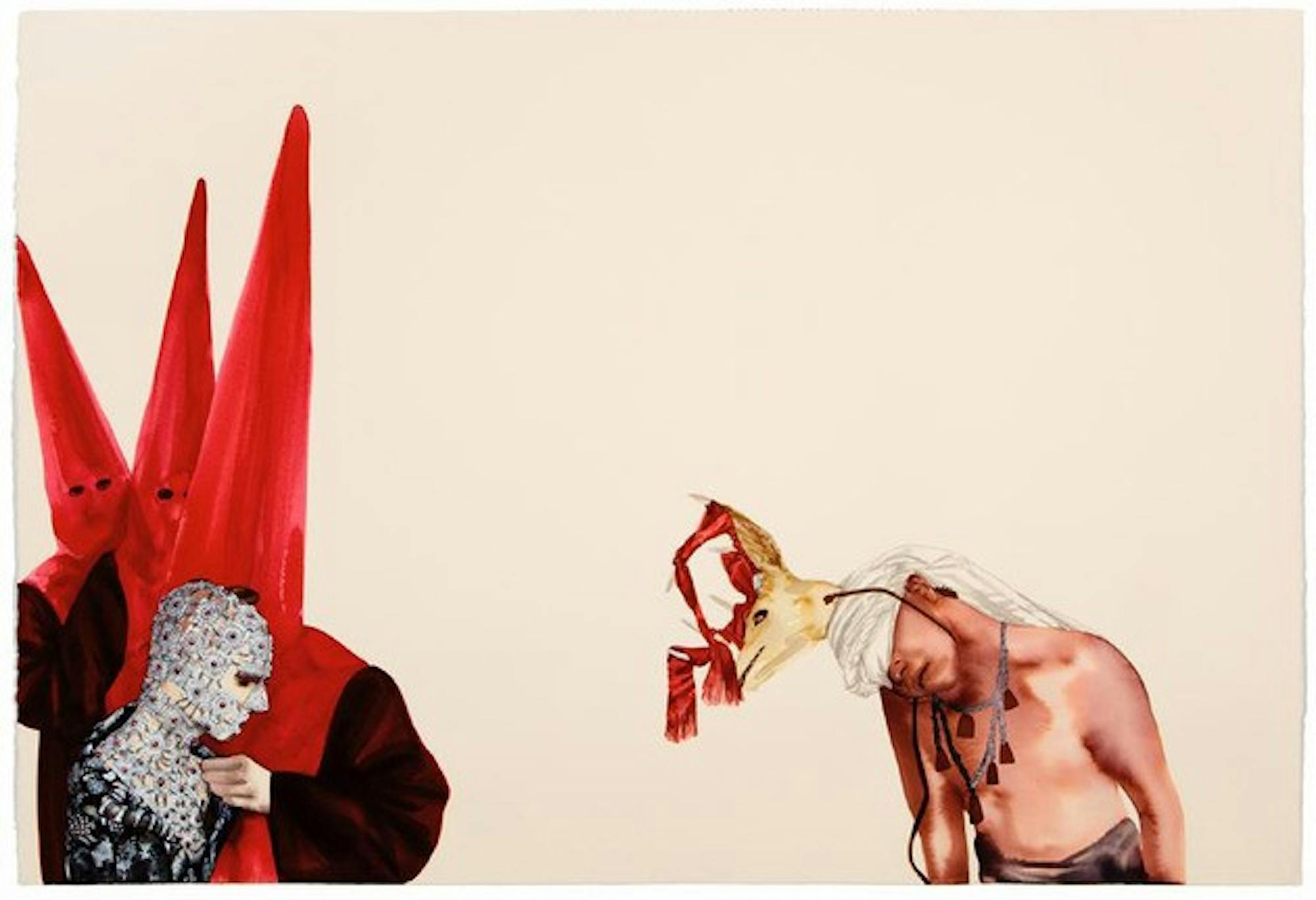The current pieces by Black, which have been on display since Sept. 10, comprise a selected group of drawings by the New Orleans native. The show features 10 pieces varying in size and subject, drawn with gouache, watercolor and ink on paper.
"My work examines the practice of masquerade and its role in relation to conceptions of identity and power," Black said in her artist statement. "My work does not illustrate any specific myth but seeks to provoke critical thought regarding current attitudes and conflicts within the terms of universal stories."
Black's creative and in some cases near-disturbing images are definitely stimulating, but might at times even seem a little too provocative. In a number of images, her message was muddled by the intensity of her unsettling figures and the complexity of her artistic purpose. Her drawings at first glance look simple due to their lack of background and expanse of untouched paper, but upon further examination seem to have a world of meaning.
"I am particularly interested in the various permutations of social practices that engender power hierarchies," Black said in the statement. "It is provoking how a disguise (even a uniform) engenders the wearer powerful through his or her clandestine anonymity."
This idea of a masquerade giving its wearer power is most aptly and intensely presented in one of the show's main pieces, titled "The Snake and the Rising of the Stag." The left side of the drawing depicts three hooded people in red Ku Klux Klan-esque garments holding down a defeated looking man covered from head to toe in metal emblems with what looks to be a snake wrapped around his shoulders. On the right of the drawing, a shirtless and maroon-toned man with a shawl covering his eyes is leaning towards the drama on the left with the head of a stag bound to his head by a chin strap. The background is left white and bare.
One of the most memorable drawings in the exhibit happened to also be one of the smallest ones on display, a piece called "Cold Dead Hands Reveille." At just 11x11 inches, the image is the most disturbing of the show an eerily smiling young girl in casual attire holds a pistol in her left hand with a gun belt around her waist. In the background are two other children, a boy and a girl, holding a target. The controversial image not only jumps out because of its disturbing nature, but also because the theme of hidden identity and masquerade is less apparent here than in Black's other drawings. The piece therefore leaves the viewer with more questions than some other pieces do.
"I seek to negotiate identity and the power of the individual who are the meek, who are the shameless, and when do the roles interchange?" Black said in her statement.
Through insightful drawings such as "The Snake and the Rising of the Stag" and "Cold Dead Hands Reveille," she certainly prompts her viewers to begin answering these questions and negotiate this idea themselves. Even though Black's exhibit, which closes on Oct. 18, is somewhat hard to follow at some points, it is exceedingly intriguing and definitely merits a trip to the Cynthia-Reeves New England gallery on South Main Street.




